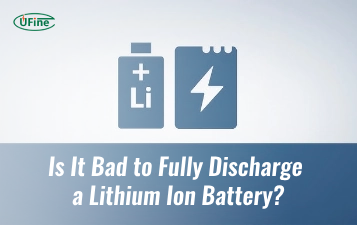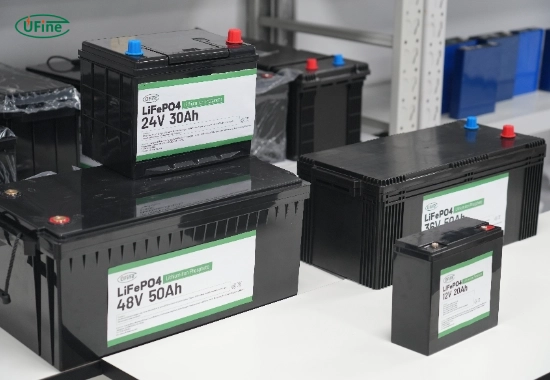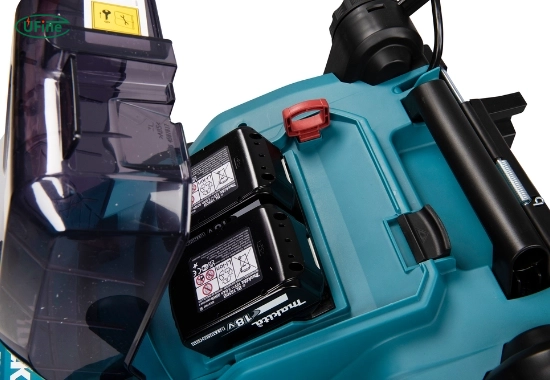
- Part 1. What is a lawn mower battery?
- Part 2. Why do you need to remove a lawn mower battery?
- Part 3. What tools do you need to remove a lawn mower battery?
- Part 4. Where is the battery located on a lawn mower?
- Part 5. How to remove a lawn mower battery – Step-by-step guide
- Part 6. How to test a lawn mower battery for a bad cell?
- Part 7. How to clean battery terminals before reinstalling?
- Part 8. How to store a mower battery properly?
- Part 9. How to install a new battery?
- Part 10. How to safely dispose of an old lawn mower battery
- Part 11. FAQs about removing lawn mower batteries
How to remove a lawn mower battery is one of the most frequently asked questions by homeowners and gardening enthusiasts. Whether your mower is struggling to start, you’re preparing it for seasonal storage, or it’s time to replace an old battery, learning to remove it correctly is essential. This comprehensive guide provides detailed, step-by-step instructions, important safety tips, tool recommendations, troubleshooting advice, and maintenance techniques to help you confidently handle your mower battery.
Part 1. What is a lawn mower battery?
A lawn mower battery is a rechargeable unit that powers the mower’s electrical system, primarily to start the engine. Unlike manual push mowers, electric start mowers, and riding mowers depend heavily on the battery to function properly. Most models use a 12-volt lead-acid battery, similar in design to car batteries but generally smaller and lighter.
These batteries are typically installed in a dedicated compartment beneath the seat, under the hood, or behind a removable panel. Over time, batteries degrade due to temperature fluctuations, corrosion, and natural wear, requiring removal for charging, testing, or replacement.
Part 2. Why do you need to remove a lawn mower battery?
There are several practical reasons why removing your lawn mower battery becomes necessary:
- Replacement: After a few years of use, batteries lose their ability to hold a charge.
- Charging: A fully drained battery often requires removal for external charging.
- Seasonal storage: Cold winter months can damage batteries; removing and storing them indoors extends their life.
- Routine maintenance: Cleaning terminals or checking for corrosion often requires disconnection.
- Troubleshooting electrical issues: Taking out the battery is often the first diagnostic step if you suspect a short or wiring issue.
Removing the battery safely prevents potential electrical hazards, allowing for more thorough inspections and maintenance.
Part 3. What tools do you need to remove a lawn mower battery?
Before removing the battery, prepare the following tools and safety gear:
- Insulated gloves
- Safety goggles
- Wrench or socket set (commonly 10mm or 1/2 inch)
- Battery terminal puller (optional)
- Wire brush or terminal cleaner
- Multimeter or battery tester
- Towel or cloth
- Plastic tray or box (for safe battery storage)
Protective gear is essential since batteries contain sulfuric acid and can emit explosive hydrogen gas under certain conditions.
Part 4. Where is the battery located on a lawn mower?
The battery’s location depends on your mower’s design:
- Riding mowers: Most batteries are under the seat or under the hood.
- Push mowers with electric start: The battery is often mounted near the handle or in a rear compartment.
- Zero-turn mowers: Batteries are usually under or behind the operator’s seat.
If unsure, consult the manufacturer’s manual or look for a plastic or metal compartment labeled with a battery symbol.
Part 5. How to remove a lawn mower battery – Step-by-step guide
Step 1: Shut off the mower completely
- Remove the key from the ignition and ensure the engine is off. If your mower has a fuel shutoff valve, close it to prevent any potential leaks.
Step 2: Disconnect the spark plug
- Disconnect the spark plug wire to avoid accidental engine ignition. This step enhances safety, especially when working around electrical components.
Step 3: Access the battery compartment
- Open the hood, lift the seat, or remove the panel covering the battery. Be gentle with plastic clips and fasteners to avoid damage.
Step 4: Identify the terminals
You will see two battery cables:
- Negative terminal (-): Usually black
- Positive terminal (+): Usually red
Always disconnect the negative terminal first to prevent short circuits.
Step 5: Loosen and remove the negative cable
- Using a wrench, carefully loosen the nut on the negative terminal. Once loose, lift the cable off the terminal and move it aside, ensuring it doesn’t touch any metal parts.
Step 6: Loosen and remove the positive cable
- Repeat the same process for the positive terminal. Be cautious not to let tools touch surrounding metal components while working on the positive post.
Step 7: Remove any battery hold-down system
- Most mowers have a clamp, strap, or bracket securing the battery. To release it, use a wrench or screwdriver.
Step 8: Remove the battery
- With both cables and hold-downs removed, grip the battery with both hands and lift it out gently. Avoid tipping it to prevent acid leakage.
Part 6. How to test a lawn mower battery for a bad cell?
If your lawn mower struggles to start or the battery loses charge quickly, it may have a bad cell. Here’s how to test for it:
Step 1: Charge the battery fully
- Bring the battery to full charge using a 12V battery charger. This ensures accurate readings during testing.
Step 2: Use a digital multimeter
Set the multimeter to DC voltage and connect the probes to the battery terminals — red to positive, black to negative.
- A fully charged 12V battery should read 12.6 to 12.8 volts.
- If it reads below 12.4 volts, it may be undercharged or defective.
Step 3: Perform a load test
If you have a battery load tester, apply the load for 10–15 seconds and observe the voltage:
- The battery likely has a bad cell if the voltage drops below 9.6 volts.
- Uneven voltage between cells indicates internal damage.
Step 4: Check individual cells (optional)
For advanced users, a hydrometer can test each cell’s specific gravity, though this is more common with serviceable batteries.
If a bad cell is confirmed, the battery needs to be replaced.
Part 7. How to clean battery terminals before reinstalling?
Corroded terminals can prevent your mower from starting. Here’s how to clean them:
- Mix a solution of baking soda and water.
- Dip a wire brush into the solution and scrub both terminals.
- Rinse with clean water and dry thoroughly.
- Apply dielectric grease or petroleum jelly to prevent future corrosion.
Cleaning should be done outdoors or in a well-ventilated area to avoid inhaling corrosive dust.
Part 8. How to store a mower battery properly?
If you’re removing the battery for winter or extended storage, follow these steps:
- Store in a cool, dry place away from direct sunlight.
- Keep the battery off the ground on a wooden surface or shelf.
- Charge it every 30–60 days to maintain health.
- Avoid storing near flammable materials.
Proper storage extends battery life and reduces the risk of leaks or damage.
Part 9. How to install a new battery?
Installing a replacement battery is the reverse of removal:
- Place the new battery in the same orientation.
- Reattach the hold-down bracket securely.
- Connect the positive terminal first.
- Connect the negative terminal second.
- Tighten the bolts and apply the terminal protector.
- Reconnect the spark plug and close the compartment.
- Start the mower to test the installation.
Ensure cables are snug but not over-tightened, as overtightening can damage terminals.
Part 10. How to safely dispose of an old lawn mower battery
Lead-acid batteries are hazardous waste and must be disposed of properly:
- Please take it to an auto parts store (many offer free recycling).
- Use a municipal recycling center or household hazardous waste facility.
- Some lawn mower retailers accept old batteries upon purchasing a new one.
Never throw batteries in the regular trash or leave them outdoors.
Part 11. FAQs about removing lawn mower batteries
Can I remove a lawn mower battery without tools?
No. You need at least a wrench or socket to disconnect the battery terminals safely.
What happens if I disconnect the positive cable first?
Disconnecting the positive first can create sparks if your tool contacts metal. Always remove the negative cable first.
How often should I replace my lawn mower battery?
Most batteries last 3 to 5 years. Replace them if they no longer hold a charge or fail a load test.
Is it safe to charge the battery while still connected to the mower?
Removing the battery before charging is safer to avoid damage to the mower’s electrical system.
What are the signs of a failing battery?
- Slow or no engine crank
- A clicking sound when turning the key
- Dim lights (if applicable)
- Frequent need for jump-starts
Related Tags:
More Articles

Is It Bad to Fully Discharge a Lithium Ion Battery?
Discover what happens if a lithium battery is fully discharged and how to safely recharge 12V batteries to prevent permanent damage.
Does a Higher mAh Battery Last Longer?
Does a higher mAh battery really last longer? Learn what mAh means, real battery life in hours, replacement safety (4000 vs 5000mAh), and real examples.
Exploring the Lithium Ion Battery Fire Temperature
Discover the lithium-ion battery fire temperature and learn how to stay safe. Get essential tips to prevent battery fires and protect your devices today.
The Ultimate Guide to 6s Lipo Batteries
A beginner-friendly guide to 6S LiPo batteries. Understand voltage, capacity, charging tips, safety rules, and real-world applications.
What is the NCMA battery? What is the difference between it and the NMC battery? Which one is better? This article will answer your questions.




